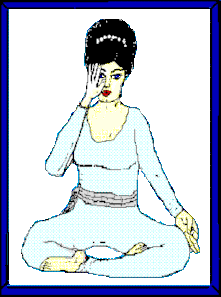|
|
|
BREATHE LONG AND DEEP
In a stress filled world a method of calming upset emotions and relieving exhaustion is essential and easily acquired. Control of the breath. Breath is one of the primary signs of life. It is a method of calming the nerves and controlling the mind. When the chatter of the mind is calmed the body follows. The pace of most of our lives has increased. Pollution has become a serious problem almost everywhere. A really good natural breath is not as easy to get as it used to be. Do you breathe through your mouth or your nose? Have you ever thought about it? Do you feel your breath all the way down into your abdomen? A really good breath should be deep and complete. The lungs should be filled completely. It should be a slow act. The flow of air should be uniform and the time taken for each breath should be the same. Exhalation should be slow, deep and empty the lungs to the maximum extent. From ancient times mankind has known that breath and stress (physical and emotional) are related. Long deep breathing is fine for anyone. Sit with your spine straight or lay on the floor with your spine straight. Exhale all the air out of your lungs through your nose by contracting your navel point back toward the spine. Now inhale deep pushing the navel point out and expanding the lower one third of your lungs (the most important part) then consciously move your ribs out of the way and expand the middle portion of your lungs. Then expand the upper 1/3
Yogic breathing is called pranayama. Pranayama is part of all yogas and is one of the practices of kundalini yoga. Prayanama is the art of controlling the prana (life force). It is the fourth rung on Patanjali's eight-fold ladder of yoga. Patanjali is the author of the yoga sutras, the most ancient written text on the yogic path to enlightenment. Sutra literally means, "thread". The sutras are very short concise statements meant to be explained in detail by a teacher to a student.
Correct long deep breathing is for anyone. Other breathing practices that are acceptable for anyone will be explained later.
Back to Main
Sat Jiwan Singh is a certified Yoga Instructor (2 certifications)